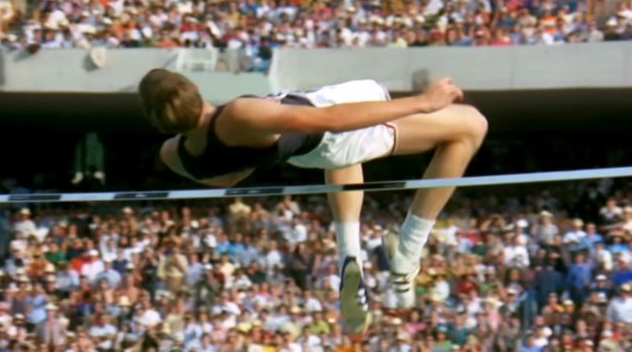"Find what the truth is, what works for you to run faster, jump higher, throw farther than anybody else.” - Dick Fosbury

A tall, lean athlete in mismatched shoes gathers pace as he runs towards the high jump bar. Upon take-off, he twists his body and passes over the bar with his back arched and his stomach facing upwards. The world is astounded as it witnesses the unknown Dick Fosbury soar to the Olympic gold and high jump record in an unconventional, almost bizarre fashion.
This high jump technique is common in the sport today, but until the 1968 Summer Olympics in Mexico City, the world had never seen anything like it. Young Fosbury’s innovative technique, which became known as the Fosbury Flop, revolutionized the sport and became its gold standard. No one in close to fifty years has won a medal of any colour in the sport without using this technique. Underlying this remarkable innovation is a story of persistence that we can all learn from.

Fosbury’s path to high jump started in high school. The tall and awkward teen loved sport but could not get into the football team and had no success with basketball either. He tried athletics and of all the disciplines explored, high jump was the one he fared least poorly in. His choice of sport was made.
Fosbury was unspectacular at high jump. Though he stood six feet four inches tall, his personal best was five feet four inches, making him the worst high jumper in his high school, the worst in the conference and probably one of the worst in the state of Oregon. Few believed he would achieve anything notable as an athlete. His place on the track team hung in a balance.
What Fosbury lacked in natural athleticism, he made up with sheer persistence. Stubborn and determined to stay on the track team, young Fosbury realized he had to do things differently. He wasn't sure what to change, or whether any of the changes he would make could take him higher. He simply knew he had to find something different that worked, and kept at it.

On one of his attempts, Fosbury reverted to the oldest known high jump style, the scissors, considered outdated by most. Raising his hip higher and leaning back more than the traditional scissor, he 'flopped' over the bar comfortably. Feeling that he was on to something, Fosbury continued to refine this technique as the bar rose higher and higher. He succeeded each time and by the end of that day, he had cleared six inches higher than his previous best. The Fosbury Flop was born. It continued to evolve, largely unnoticed, until it propelled its inventor to the top of the world five years later in Mexico.
Recounting that day, Fosbury says, “That first day when I was changing my technique, I was not out to change the world... I was just trying to get over the bar and stay on the track team." One can only wonder what would have happened if a sixteen-year-old Fosbury had thrown in the towel; little was expected of him anyway. Instead, he persisted and the rest is history.

We could do worse than to learn from young Fosbury's response when the odds are stacked against us, especially in a time such as this where businesses and careers are adversely impacted. The next time we feel like giving up, let us remember the flop that reached new heights and persist in exploring new ways of reaching our goals. We might just discover a Fosbury Flop of our own along the way.
Follow us on Facebook: Strategyc Consulting

Comments